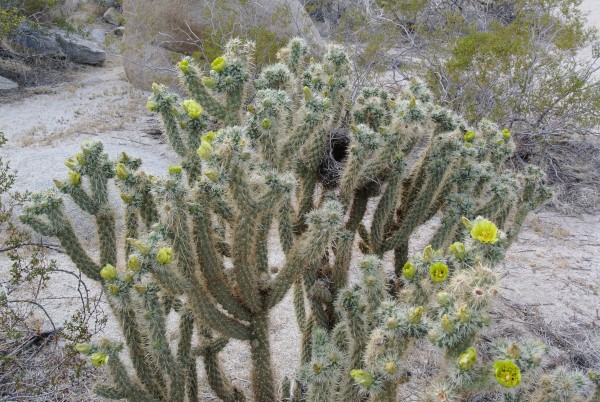4 Of The Most Dangerous Cacti In The United States

Cacti are the truly a dream for those who struggle with having the time to care for a garden. They require virtually no maintenance or water, which means that most of them thrive on neglect. However, cacti have a low tolerance for the cold, which means that they are found mostly in xeroscape gardens in the southern states.
Some people in in the northern states keep them in indoor greenhouses though. While most varieties of these desert plants are harmless, there are four of them that should be handled with caution should a person be brave enough to own them.
The cholla cactus is also called the “jumping cholla” because its spines seem to leap out at any person or animal who happens to walk by it. These spines are particularly dangerous because they are covered in tiny barbs, which make them grip whatever they attach to quite ferociously.
To get them out of the skin, usually requires a trip to the emergency room, but sometimes, they are left in until puss from the ensuing infection forms around the wound. The puss acts as a lubricant to help reduce the amount of resistance that the barbs create.
The barrel cactus gets its name from its barrel-like shape. It grows quite large with some varieties reaching close to ten feet in height. If one of its spikes should puncture the skin, a person can get an infected chronic wound lasting several months that must be treated with antibiotics. Ingesting or smelling its exposed flesh is even more dangerous since it can lead to death if a person or animal is not treated quickly.
The pencil cactus is tall and thin. It reaches roughly 30 feet in height, so many gardeners try to prune it down some. Deliberate precautions must be taken when handling this type of cactus though. It must be touched only with metal tools that are thoroughly washed and disinfected afterwards.
Eye protection must be worn as well. If the juice from its flesh should make contact with a person’s skin, they can go into anaphylatic shock. Their lips will go numb, and they will experience shortness of breath and agitation. If the juice reaches the eyes, it will cause severe burns to the corneas, which can lead to permanent blindness.
This spiky candelabra shaped cactus grows to about eight feet. Sometimes, it is also called “false cactus” because it is actually more closely related to the castor bean plant than cacti. Still, its resemblance is strikingly similar, and it has the same water and light requirements of most desert plants.
If the flesh is injured, a white milky sap will leak from it. This sap is a skin irritant that will cause redness, blisters, and swelling of the affected area. If ingested internally, a person will have symptoms of vomiting, abdominal pain, and nausea so badly that they require a trip to the emergency room for treatment. It should be kept away from pets because small animals can die from its toxicity.
If you’re interested in tree trimming or stump removal try out Valley Tree Managers. They are a full service cactus, tree, and stump removal company who have been around for years!
